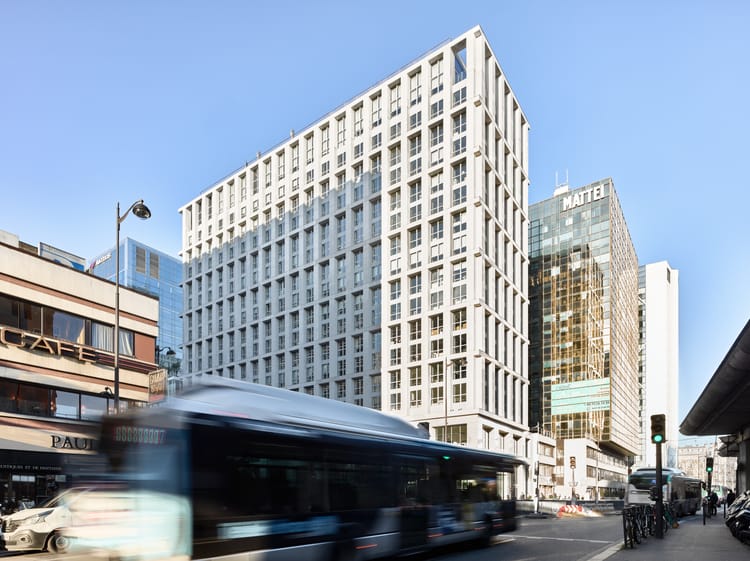Zara owner Inditex to buy €70mn worth of recycled polyester in bid to improve circularity and cut emissions

Inditex, the world’s largest fast-fashion group, has signed a €70 million deal with a US startup that creates materials from textile waste using “molecular regeneration”, in a move led by Chief Sustainability Officer Javier Losada.
The three-year deal between Zara owner Inditex and startup Ambercycle will support the construction of Ambercycle’s first commercial facility to make its patented ‘cycora’ polyester, with production expected to begin in 2025.
As part of today’s announcement, Inditex – which sold €16.9 billion worth of clothes in the first half of 2023 – has also launched a capsule collection made of “up to 50%” of this material within its Zara Athleticz brand.
Textile-to-textile recycling: a top circularity strategy in the fashion sector
Increasing the share of items made from recycled post-consumer textile fibres is the second-most popular circularity strategy amongst fashion companies, after the implementation of “design strategies for cyclability”. This is according to the latest S&P Corporate Sustainability Assessment, which found that almost half of textile companies have at least one circular fashion programme in place, but very few (about 16%) are tracking how many pounds of materials these programmes are removing from the waste stream.
Using textile-to-textile recycled materials is a key strategy employed by Inditex to minimise its supply chain impact, and the Spanish-based fashion giant has set a goal of using 100% polyester from “preferred sources” by 2025.
(Preferred sources are defined as raw fibres or materials that deliver “ongoing beneficial outcomes and impacts for climate, nature and people” by Textile Exchange, a non-profit aiming to drive positive climate impact in the fashion sector.)
Commenting on the announcement, Inditex Chief Sustainability Officer Javier Losada said: "At Inditex, we are committed to achieving circularity in the fashion industry. We want to drive innovation to scale up new solutions, processes, and materials to achieve textile-to-textile recycling. Ambercycle’s groundbreaking molecular regeneration technology transforms end-of-life textiles into new materials, effectively reducing waste and emissions in the production cycle.”
This latest agreement follows similar deals struck by Inditex with recycled fabric makers Renewcell and Infinited Fiber Company last year.
Fast fashion is largely responsible for the industry’s greenhouse gas emissions – which make up 8 to 10% of the global carbon footprint annually – and oil-based polyester represents 80% of all synthetic fibre use.
In the US alone, people discard 34 billion pounds (17 million tonnes) of clothes annually, mostly from fast fashion brands. Only 15% of this waste is recycled, with the wide majority sent to landfill. On a global scale, these enormous amounts of post-consumer fashion waste are creating literal mountains of toxic pollution in places like Chile’s Atacama Desert.
Inditex Scope 3 emissions strategy: circular sourcing and low-carbon shipping
By changing sourcing practices, the company is hoping not just to contribute to a more circular fashion industry, but also to cut its Scope 3 emissions: in 2022, these amounted to more than 99% of its overall carbon footprint, with more than a quarter of emissions coming from raw material extraction and processing.
Earlier this month, the company also announced a partnership with Maersk to reduce maritime transport emissions through the use of green fuels such as green methanol or biodiesel based on waste feedstocks.
With the potential to cut emissions by 80% compared to conventional fuel sources, the agreement could make a significant dent in Inditex’ Scope 3 emissions from transportation – 8.4% of the company’s 17,2 million tonne Scope 3 footprint.
Inditex sustainability goals
Inditex has an SBTi-approved target to achieve net zero emissions by 2040, and is aiming to cut Scope 1 and 2 emissions by 90% by 2030.
For operational emissions, its strategy includes reducing electricity consumption and switching to renewable energy sources for its corporate headquarters, factories, logistics centres and stores. In 2022, the company reached its target of using 100% electricity from renewable sources in all our own facilities.
This was achieved mainly through virtual power purchase agreements and renewable energy certificates, but Inditex is also working to implement local renewable energy projects. Its most notable energy investment is a €30 million wind power plant expected to begin operations in 2025, which should cover all the electricity consumed at the company’s headquarters and provide clean power to port facilities in A Coruña.







Member discussion